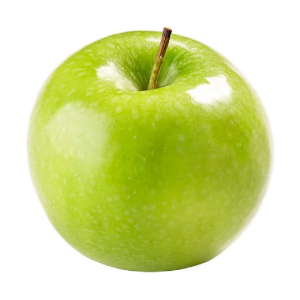Folks are always surprised when I tell them tart, salty dishes can be improved significantly by adding a little sugar. And they’re usually just as curious when I tell them many sweet dishes can benefit from a pinch of salt. How, you ask, does that work?
 Marinara Sauce is a classic recipe that a little sugar will improve and balance
Marinara Sauce is a classic recipe that a little sugar will improve and balance
significantly. Dialling down the tomatoes’ metallic tartness will also help
you amplify the overall umaminess using your fave herbs and spices…
Why is a little salt so important?
They say its the little things that make the difference between good and great – whether in food, art or music. Thus it is with the counter-intuitive culinary rules of thumb that call for adding a little salt or sugar to dishes you wouldn’t think need them.
Some of these ‘detail’ issues remain points of polite disagreement among all cooks, from top chefs to old-school Italian nonas whose second-favourite subject of discussion after their grandchildren is ‘How to make the Red Sauce‘. Confectioners, bakers and pastry chefs also have some pretty strong positions over adding salt to sweet dishes. Salt is an especially touchy subject since the scientific community has recently pegged adding too much salt to both processed and home-prepared foods, as a major contributor to development of cardio-pulmanry ills.
The simple answer…
The simple answer is, sweet and especially salt are not only flavours of their own. They mediate the overall balance of complex flavours in both the savoury and sugary domains.
Salt especially plays an important part because it’s one of two fundamental seasonings (paired with black pepper) in the known culinary universe (if you don’t count MSG). It tweaks your taste buds to taste whatever you’re eating more strongly. Consequently, you enjoy the flavours in your food more. The trick is to use enough salt to enhance the food without adding so much that you actually taste the salt, itself – just its effect on the flavour of the food.
I think we all know that it’s a biblically famous rule to add ‘a liberal amount’ of salt to starchy foods. Otherwise, you taste the starchiness and not the natural flavours of the food. The rule goes as much for pasta as it does for pastry; as much for potatoes as for polenta. And it’s really important to add all the salt the recipe calls for when baking bread. Otherwise, the flavour of the bread will disappear beneath what ever you serve on or with it, And with it will go a big part of the overall flavour and enjoyment of the dish.
Sweet needs salt, too
Experienced cooks will tell you that a certain amount of salt is necessary for deep-sweet flavours – very importantly, chocolate – need a pinch of sale to optimize their finished flavours. Otherwise, they can turn out too sweet, with nothing to counter the bitter component of the cocoa. And the overall flavour of your dish will turn out ‘thin’ and ‘sharp’, rather than round, full and well-balanced.
There’s also a school of thought that says you should add a light sprinkle of salt to fresh fruit, to counter the natural tartness and occasional bitterness. A touch of salt can also help counter an overabundance of sweetness in fruit, especially over-ripe fruit. But consider the pros and cons of adding more salt or sugar to foods that are already naturally high in one or the other.
A case in point: My boss at the radio station, when I first came to Ottawa to work in the big city, always finished his lunch with a Granny Smith (Green) Apple. He’d stand there, in a back corner of the employee commissary, with the apple in one hand and a salt shaker in the other. He stroked out in his late 50s. And word from the family was, the doctors thought salting his apple every day was a significant contributor to his eventual demise from pulmonary artery disease.
The nonas weigh in
One classic situation where adding a little sugar seems nutty is with tomato-based sauces, soups and stews. This one I learned from one of my fave instructors at culinary school. A dash of sugar – no more than a measured teaspoon – in your tomato sauce will cut the acidity allowing a full, round flavour to come through. You’ll probably add salt later, the amount depending on what else you’re adding to your sauce, soup or stew.
A corollary to this rule is, always add a few drops of dark, well-aged Balsamic vinegar to your Tomato dishes to correct a overabundance of salt. You can’t take out the excess salt, but you can balance it out. The big side benefit of using even a little Balsamico is the big boost it will give any tomato-flavoured dish. It’s umami in a bottle! And you don’t need a lot much; just enough to boost the flavour. You don’t want to taste the Balsamic flavour itself in these applications…
Now that you know
Consider using the rules and techniques we’ve discussed today any time you have a dish that needs flavour re-balancing. It’s one of those little things that sets the pros apart from the weekend gourmets!
~ Maggie J.

